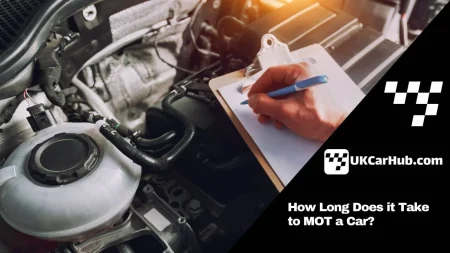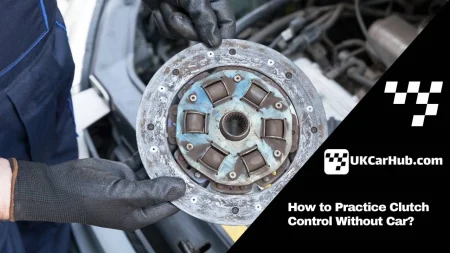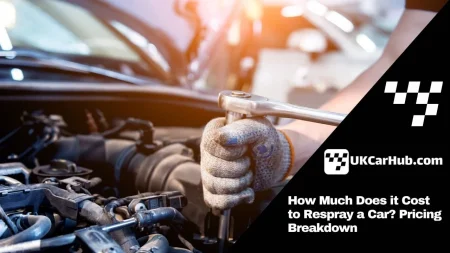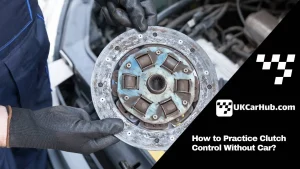The Ultimate Guide to Car Maintenance: Tips and Tricks for Keeping Your Car in Top Shape Owning a car comes with a lot of responsibilities, and one of the most important is regular car maintenance. In this blog post, we will discuss the importance of regular car maintenance, essential car care tips, how to change car oil and filters, keeping your car’s exterior clean and shiny, maintaining proper tire pressure for safety, and signs that your car needs servicing. Whether you’re a new car owner or a seasoned pro, these tips and tricks will help you keep your car running smoothly for years to come. So, let’s dive in and learn how to take the best care of your trusty vehicle!
Importance Of Regular Car Maintenance
Regular car maintenance is essential for the optimal performance and longevity of your vehicle. Taking care of your car not only ensures that it runs smoothly but also helps in preventing potential issues that could lead to costly repairs. Proper car care and maintenance in the UK should be a top priority for every car owner. By investing a little time and effort into regular maintenance, you can save yourself from unnecessary hassles and keep your car in the best possible condition.
One of the most important aspects of regular car maintenance is changing car oil and filters at recommended intervals. Engine oil lubricates and cools the engine, preventing it from overheating and ensuring smooth operation. Over time, the oil gets contaminated with dirt and debris, reducing its effectiveness. By changing the oil and filters regularly, you ensure that your engine remains well-lubricated and protected against wear and tear. This simple maintenance task can significantly extend the life of your engine and improve fuel efficiency.
In addition to changing oil and filters, keeping your car’s exterior clean and shiny is another important aspect of regular car maintenance. Regular washing and waxing not only improve the appearance of your vehicle but also help protect the paint from damage caused by environmental factors such as UV rays, bird droppings, and road grime. Properly maintained paintwork not only contributes to your car’s aesthetic appeal but also helps in retaining its resale value. So, make sure to give your car a thorough wash and occasional wax to keep it looking its best.
| Importance Of Regular Car Maintenance: |
|---|
| 1. Essential Car Care Tips |
| 2. How To Change Car Oil And Filters |
| 3. Keeping Your Car’s Exterior Clean And Shiny |
| 4. Maintaining Proper Tire Pressure For Safety |
| 5. Signs That Your Car Needs Servicing |
Maintaining proper tire pressure is crucial for your safety on the road. Underinflated tires can affect handling, reduce fuel efficiency, and increase the risk of accidents. On the other hand, overinflated tires can lead to a harsh ride and uneven tread wear. To ensure your tires are properly inflated, check their pressure regularly with a reliable tire pressure gauge. Refer to your car’s manual or the information on the driver’s side door jamb for the recommended pressure. By maintaining proper tire pressure, you not only enhance your car’s safety but also enjoy a smoother and more comfortable ride.
Lastly, paying attention to signs that your car needs servicing is crucial in preventing major breakdowns and unnecessary repairs. Unusual noises, engine warning lights, difficulty starting the car, or a decrease in performance are all indications that your vehicle requires attention. Ignoring these signs can lead to more significant issues and potentially leave you stranded on the side of the road. So, if you notice anything out of the ordinary, it’s essential to take your car to a trusted mechanic promptly.
Essential Car Care Tips
In order to keep your car running smoothly and to ensure your safety on the road, it is essential to follow proper car care and maintenance practices. Regular maintenance not only helps to prolong the life of your vehicle but also saves you from costly repairs down the line. Here are some important car care tips to keep in mind:
1. Regularly Check and Change Your Oil and Filters: One of the most important aspects of car maintenance is to regularly check and change your oil and filters. Engine oil lubricates the moving parts of your car’s engine, preventing wear and tear. It is recommended to change your oil every 3,000 to 5,000 miles or as specified by your vehicle manufacturer. Additionally, don’t forget to change the oil filter as well to ensure clean oil circulation.
2. Keep Your Tires Properly Inflated: Maintaining proper tire pressure is not only essential for the optimal performance of your car but also for your safety on the road. Underinflated tires can lead to decreased fuel efficiency, poor handling, and increased risk of a blowout. Use a tire pressure gauge to regularly check the pressure and refer to your vehicle owner’s manual for the recommended psi.
3. Regularly Inspect and Replace Worn Out Belts and Hoses: Belts and hoses play a crucial role in the functioning of various components in your car, such as the alternator, air conditioning, and cooling system. Over time, these belts and hoses can wear out and crack, leading to potential breakdowns. Regularly inspect them for any signs of damage or wear and replace them as necessary to avoid costly repairs.
4. Keep Your Car’s Exterior Clean and Shiny: Regularly washing and waxing your car’s exterior not only enhances its visual appeal but also protects the paint from damage caused by dirt, debris, and UV rays. Avoid using harsh cleaners that can strip the paint or cause scratches. Additionally, don’t forget to clean the windows, mirrors, and headlights for better visibility.
5. Pay Attention to Warning Signs: It is important to pay attention to any warning signs that your car may be giving you. Strange noises, fluid leaks, warning lights on the dashboard, or changes in performance should not be ignored. These signs may indicate a problem that needs immediate attention. Regular servicing can help identify and address these issues early on, preventing further damage.
By following these essential car care tips, you can ensure that your vehicle stays in optimal condition, providing you with a smooth and safe driving experience. Remember, proper care and maintenance not only save you from expensive repairs but also contribute to the overall longevity of your vehicle.
How To Change Car Oil And Filters
Changing the car oil and filters is an essential maintenance task that every car owner should know how to do. Regularly changing the car oil and filters not only helps to extend the lifespan of the engine but also ensures optimal performance and fuel efficiency. So, if you want to learn how to change car oil and filters, keep reading!
Firstly, gather all the necessary tools and materials before starting the process. You will need a socket wrench, an oil filter wrench, a new oil filter, the recommended engine oil, a drain pan, and a funnel. Make sure you have all these items handy to avoid any interruptions during the process.
Next, park your car on a level surface and let the engine cool down completely. Pop the hood and locate the oil filter and oil drain plug. Place the drain pan beneath the oil drain plug, and using the socket wrench, loosen and remove the plug. Allow the oil to completely drain out into the pan. Be careful as the oil may still be hot.
Once all the oil has drained out, locate the oil filter and use the oil filter wrench to remove it. Take note of the position of the old filter and ensure it is properly disposed of. Now, using a clean rag, wipe off any residual oil or debris from the filter housing before installing the new oil filter. Apply a thin layer of oil to the rubber seal of the new filter to ensure a proper seal.
Now it’s time to refill the engine with fresh oil. Using the funnel, pour the recommended amount of oil into the oil filler cap located on top of the engine. It is important to refer to the car manufacturer’s specifications for the correct type and quantity of oil to use. Once you have added the oil, replace the oil filler cap and start the engine. Let the car run for a few minutes to allow the oil to circulate throughout the engine.
Lastly, check the oil level using the dipstick. Insert the dipstick, let it sit for a moment, and then remove it to check the oil level. If the oil level is below the recommended mark, add more oil until it reaches the proper level. It is always a good idea to double-check for any leaks around the oil filter and drain plug before closing the hood.
| Step 1 | Step 2 | Step 3 |
|---|---|---|
| Gather all the necessary tools and materials. | Locate the oil filter and oil drain plug. Remove the plug and drain the old oil. | Remove the old oil filter and replace it with a new one. Refill the engine with fresh oil. |
Changing your car oil and filters may seem like a daunting task at first, but with practice, it will become an easy and important part of your car maintenance routine. Remember to always follow the car manufacturer’s recommendations and specifications for the correct oil type and filter to use. By regularly changing your car oil and filters, you will keep your engine running smoothly and ensure the longevity of your beloved vehicle.
Keeping Your Car’s Exterior Clean And Shiny

When it comes to car care and maintenance, one aspect that often gets overlooked is keeping the car’s exterior clean and shiny. However, it is essential to pay attention to the exterior of your car, not only for aesthetic reasons but also to protect the paintwork and maintain the overall value of your vehicle.
Firstly, regular washing is crucial to keep your car’s exterior looking its best. Using a mild car shampoo and a soft sponge or microfiber cloth, lather the entire vehicle and rinse thoroughly with water. This will remove dirt, dust, and other contaminants that can accumulate on the surface, preventing them from causing any damage to the paint.
Additionally, it is important to maintain proper tire pressure to ensure both safety and the overall appearance of your vehicle. Underinflated tires not only affect the handling and fuel efficiency of your car but can also lead to premature wear and tear on the tires. On the other hand, overinflated tires can cause excessive wear on the center of the tire tread. Regularly check the tire pressure using a reliable tire pressure gauge and adjust it as necessary.
In addition to washing the exterior, it is also recommended to wax your car regularly. Car wax not only adds a protective layer to the paint, shielding it from harmful UV rays and environmental contaminants, but also gives your car a shiny finish. Apply the wax following the manufacturer’s instructions and buff it off to reveal a glossy and smooth surface.
Furthermore, paying attention to the small details can make a significant difference in maintaining your car’s exterior appearance. Clean the windows inside and out using a high-quality window cleaner to ensure optimal visibility. Take care of the car’s headlights by using specific polishes to remove any oxidation and restoring their clarity. Lastly, periodically clean the wheels and rims, paying attention to any brake dust buildup that can corrode the surface.
To summarize, keeping your car’s exterior clean and shiny is an important part of proper car care and maintenance. Regular washing, maintaining proper tire pressure, waxing, and attention to detail will not only enhance the aesthetic appeal of your vehicle but also protect the paintwork and overall value. By following these essential tips, you can ensure that your car shines as brightly on the outside as it does on the inside.
Maintaining Proper Tire Pressure For Safety
Proper tire pressure is not only important for the performance of your car, but it is also crucial for your safety on the road. Maintaining the correct tire pressure is one of the easiest and most important aspects of car care and maintenance in the UK.
Driving with underinflated or overinflated tires can have serious consequences. Underinflated tires can lead to poor handling, reduced fuel efficiency, and increased risk of blowouts. On the other hand, overinflated tires can cause an uncomfortable ride, reduced traction, and uneven tire wear. Therefore, it is essential to check your tire pressure regularly and ensure it is at the recommended level.
One of the best ways to maintain proper tire pressure is to invest in a good quality tire pressure gauge. These gauges are inexpensive and easy to use. Simply remove the valve cap from the tire, press the gauge onto the valve stem, and a reading will be displayed indicating the tire pressure. Compare this reading to the recommended tire pressure listed in your car’s owner manual or on a sticker inside the driver’s door.
- Always check your tire pressure when the tires are cold, as hot tires can give inaccurate readings.
- If the tire pressure is too low, use an air compressor to add air. If it is too high, release some air using the gauge or a small tool.
- Remember to check the spare tire’s pressure as well, as you never know when you might need it in an emergency.
| Tire Pressure | Temperature |
|---|---|
| 30 PSI | Below freezing |
| 32 PSI | 32°F (0°C) |
| 35 PSI | Hot summer days |
It is crucial to be mindful of temperature changes, as they can affect tire pressure. In colder weather, the air inside the tire contracts, causing the tire pressure to drop. Conversely, in hot weather, the air inside the tire expands, leading to increased tire pressure. So, make sure to check your tire pressure more frequently during extreme temperatures.
By maintaining proper tire pressure, you not only improve the safety of your vehicle but also enhance its overall performance and fuel efficiency. It is a simple yet essential aspect of car care and maintenance that should never be overlooked. So, take the time to check your tire pressure regularly and enjoy a smoother, safer ride.
Signs That Your Car Needs Servicing
Regular car maintenance is crucial for the longevity and performance of your vehicle. By taking care of your car, you can ensure that it runs smoothly and reliably. One important aspect of car maintenance is recognizing the signs that your car needs servicing. Ignoring these signs can lead to more serious and costly problems down the line. So, let’s take a look at some common indicators that it’s time to take your car in for servicing.
Strange Noises: Unusual noises coming from your car could be a sign that something is amiss. If you notice squeaking, grinding, or rattling sounds, it’s important to have your car checked by a professional. These noises could indicate issues with the brakes, suspension, or engine, and ignoring them could result in major damage.
Warning Lights: Modern cars are equipped with various warning lights on the dashboard. These lights are designed to alert you of potential problems in your vehicle. If you see the check engine light, ABS light, or any other warning light illuminated, it’s important to have your car serviced as soon as possible. Ignoring these warnings could lead to more severe damage and costly repairs.
Decreased Performance: If you notice a significant decrease in your car’s performance, such as a decrease in acceleration, difficulty in starting, or a decrease in fuel efficiency, it could indicate that your car needs servicing. These issues could be caused by a range of factors, from clogged filters to spark plug problems. A professional mechanic can diagnose and fix the problem, restoring your car’s performance.
Fluid Leaks: Any signs of fluid leaks under your car should not be ignored. Leaking fluids can indicate problems with your engine, transmission, cooling system, or other vital components. It’s important to identify and fix the source of the leak promptly to prevent further damage.
Unusual Smells: Strange smells coming from your car, such as burning rubber, fuel, or oil, should not be ignored. These odors could indicate leaking fluids, overheating, or other issues. Addressing these smells by seeking professional help can prevent potential breakdowns and costly repairs.
Conclusion: Recognizing the signs that your car needs servicing is crucial for maintaining its performance and avoiding major issues in the future. If you notice any strange noises, warning lights, decreased performance, fluid leaks, or unusual smells, it’s best to consult a professional mechanic. Regular car servicing ensures that your vehicle stays in top condition and provides you with a safe and reliable means of transport.
Frequently Asked Questions
Why is regular car maintenance important?
Regular car maintenance is important because it helps ensure the safety and reliability of your vehicle. It can prevent breakdowns, save you money on costly repairs, and prolong the lifespan of your car. What are some essential car care tips?
Some essential car care tips include checking your car’s fluid levels regularly, inspecting the tires for wear and tear, keeping the exterior clean and protected, and following the manufacturer’s recommended maintenance schedule. How often should I change my car’s oil and filters?
The frequency of changing your car’s oil and filters depends on the type of oil used and the driving conditions. Generally, it is recommended to change the oil and filters every 3,000 to 5,000 miles or every 3 to 6 months. How can I keep my car’s exterior clean and shiny?
To keep your car’s exterior clean and shiny, regularly wash it using a car shampoo, dry it with a microfiber cloth, and apply a wax or sealant to protect the paint. Avoid using abrasive materials or chemicals that can damage the finish. Why is maintaining proper tire pressure important for safety?
Maintaining proper tire pressure is important for safety because underinflated or overinflated tires can lead to poor handling, reduced fuel efficiency, and increased risk of accidents. It is recommended to check tire pressure regularly and inflate them to the recommended levels. What are some signs that my car needs servicing?
Some signs that your car needs servicing include strange noises, vibrations, or odors, difficulty starting the engine, warning lights on the dashboard, or a decrease in performance. It is important to address these signs promptly to avoid further damage. How does regular car maintenance help improve performance and fuel efficiency?
Regular car maintenance helps improve performance and fuel efficiency by ensuring that all components are in good working condition. This includes regular oil changes, air filter replacements, tire rotations, and spark plug inspections, among other maintenance tasks.



















